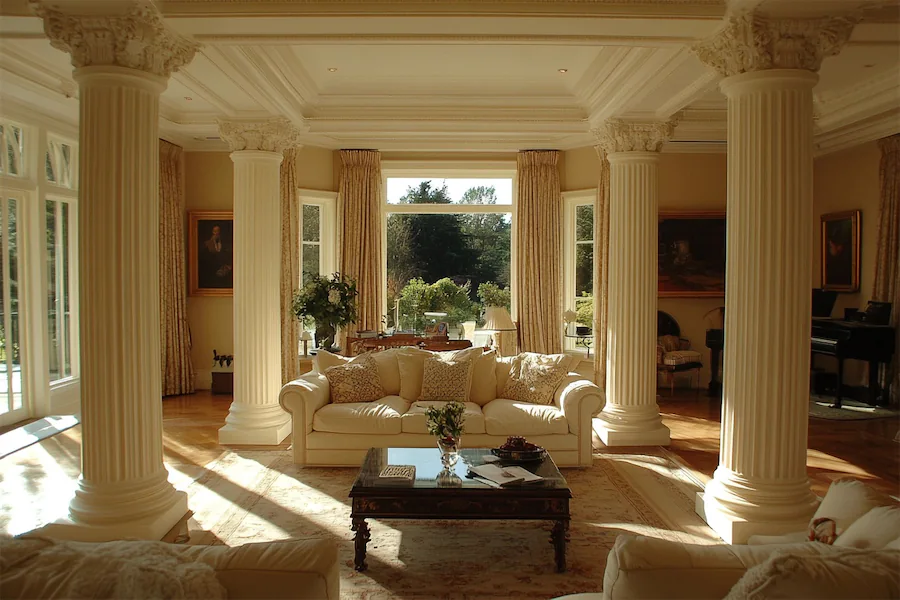Regency Revival architecture, emerging in the mid-20th century, draws inspiration from the early 19th-century British Regency period, characterized by elegance and classical influences. A defining feature of this style is the use of columns, which contribute both structural support and aesthetic grandeur.
History and Origins of Regency Revival Architecture
The original Regency era, spanning from 1811 to 1820 under the regency of George, Prince of Wales (later King George IV), was marked by a fascination with classical antiquity, leading to architectural designs that emphasized symmetry, proportion, and the use of Greco-Roman elements. The Regency Revival style, which gained popularity between 1935 and 1950, sought to resurrect these classical ideals, adapting them to contemporary needs and materials.
Key Features of Regency Revival Columns
In Regency Revival architecture, columns are prominent and exhibit the following characteristics:
- Classical Orders: Columns often adhere to the traditional classical orders—Doric, Ionic, and Corinthian—each distinguished by specific proportions and decorative elements. For instance, Ionic columns are recognized by their scrolled capitals, while Corinthian columns feature ornate acanthus leaf decorations.
- Symmetry and Proportion: The placement of columns is meticulously planned to maintain the symmetrical and balanced aesthetic central to Regency design. This symmetry extends to the overall façade, where columns often frame entrances or support porticos, creating a harmonious visual rhythm.
- Material Usage: While traditional Regency architecture utilized materials like stone and stucco, the revival style incorporated modern materials, including cast iron and steel, allowing for greater flexibility and durability. These materials facilitated the creation of slender columns with refined details, enhancing the elegance of the structures.
Applications of Regency Revival Columns
Columns in Regency Revival architecture serve both functional and decorative purposes:
- Porticos and Entrances: Columns frequently support porticos—covered entrances that provide shelter and introduce a grandiose element to the building’s façade. These porticos often feature pediments and entablatures, reinforcing the classical theme.
- Verandas and Balconies: In residential designs, columns may support verandas or balconies, offering outdoor spaces that blend seamlessly with the building’s overall aesthetic. These elements not only enhance the visual appeal but also improve the functionality of the living spaces.
- Interior Spaces: Within interiors, columns can delineate spaces without the need for solid walls, maintaining an open and airy atmosphere. They often frame doorways or support arches, contributing to the flow and elegance of the interior layout.
Considerations When Choosing Regency Revival Columns
When incorporating columns into Regency Revival designs, consider the following:
- Authenticity: Adhering to the proportions and detailing characteristic of classical orders ensures the columns contribute to the intended aesthetic. This authenticity can be achieved by studying historical examples and employing skilled craftsmanship.
- Material Selection: Choosing appropriate materials that balance durability with the desired finish is crucial. While modern materials offer advantages, they should emulate the appearance of traditional ones to maintain stylistic coherence.
- Maintenance: Regular upkeep, such as cleaning and occasional repainting, is necessary to preserve the columns’ appearance and structural integrity, especially when using materials susceptible to weathering. Implementing protective measures, like proper drainage and sealing, can prolong the lifespan of the columns.
Conclusion
Columns are a quintessential element of Regency Revival architecture, encapsulating the classical elegance and refined proportions that define the style. Their thoughtful integration into both exterior and interior spaces enhances the grandeur and timeless appeal of Regency Revival structures, bridging historical design principles with modern architectural practices.
